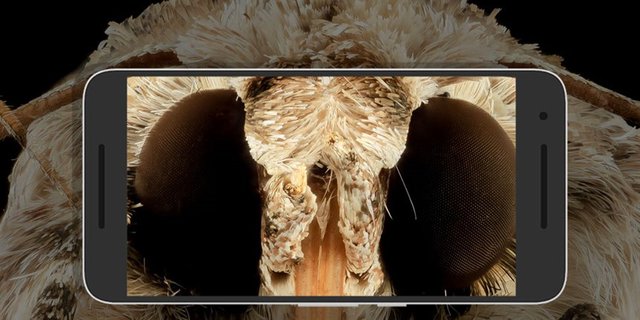Moths are silly, are not they? I'm sorry that I started so sharply ... just a lot of people these insects associate with a glareless glimpse directly into the light source that is just around. Why do they do it? It's about navigation? Are they a light bulb with the moon and come out completely different than they planned? Hard to say…
It seems that moths do not come up with the artificial light sources that exist during the night, but ... there are things that do exceptionally well. Night butterflies mastered a thing to such an extent that even great, amazing, wise people decided to give them something to catch. Bravo moth!
Moth eye
As the subtitle I wanted to give the "eye of the cyclone" because it sounds more intriguing, but the truth is that we focus on the moth eye ... It has nanostructures on its surface, thanks to which the light mostly falls into the eye and bounces minimal. Of course, light goes to the inside of the eye, for example in humans, but the difference is that compared to the night butterflies, much light on the human eye is reflected.

With such evolutionary eye adaptation, predators are much more difficult to spot, and these insects are better seen in the dark. That would be enough, I just wanted to say that moths are not stupid, they are very cool. Thanks for the attention and ... ah yes, there is something else.
Eye moths and people playing smartphones outside the home
Scientists and engineers have been inspired by night butterflies, which has allowed them to create much better anti-glare materials! Just reproduce the nanostructures existing on the moth to enjoy ... increased solar panels performance or the ability to play ... what do most people play outside? Probably in Pokemon Him? From now on, catching the Pokemon can be made much easier, and all by evolution! No ... no evolution of the pokemon, and dark!
Recently published research work by researchers from the University of Central Florida , who have been praised for their achievements in new, improved anti-reflection coatings designed for smartphones. This type of work was done earlier, ie using the eye properties to improve, for example, the screens on TVs. However, there are still various problems that do not allow for easy implementation of the solution on a large scale. For example, the TV screens I mentioned are likely to be more susceptible to dirt, and if they were to use this technology on smartphones, the same frequent touch would cause undesirable damage. That's why scientists at the University of Central Florida have done a better job of scratching and dirt. Possible problems? For example, potentially high production costs ...